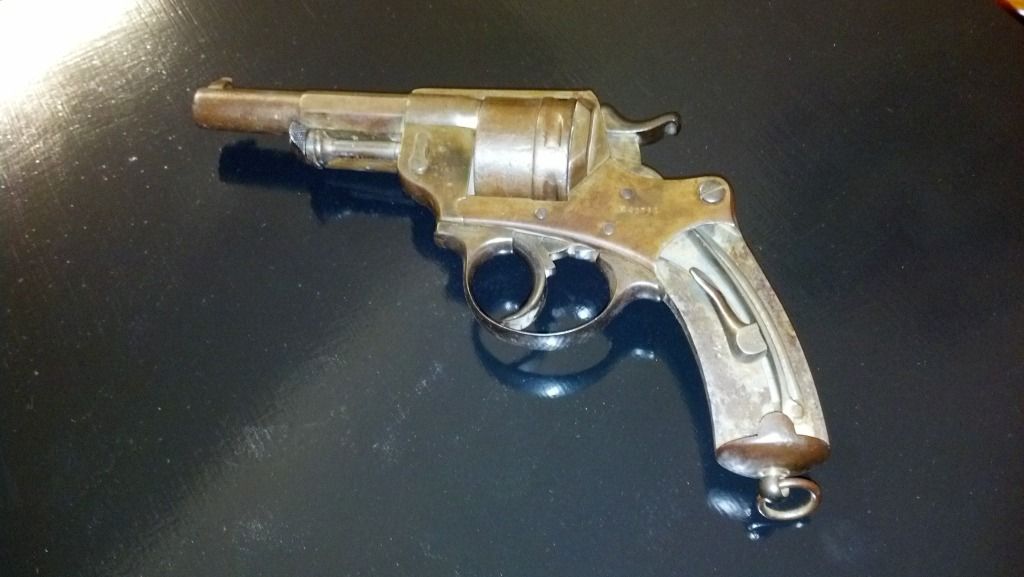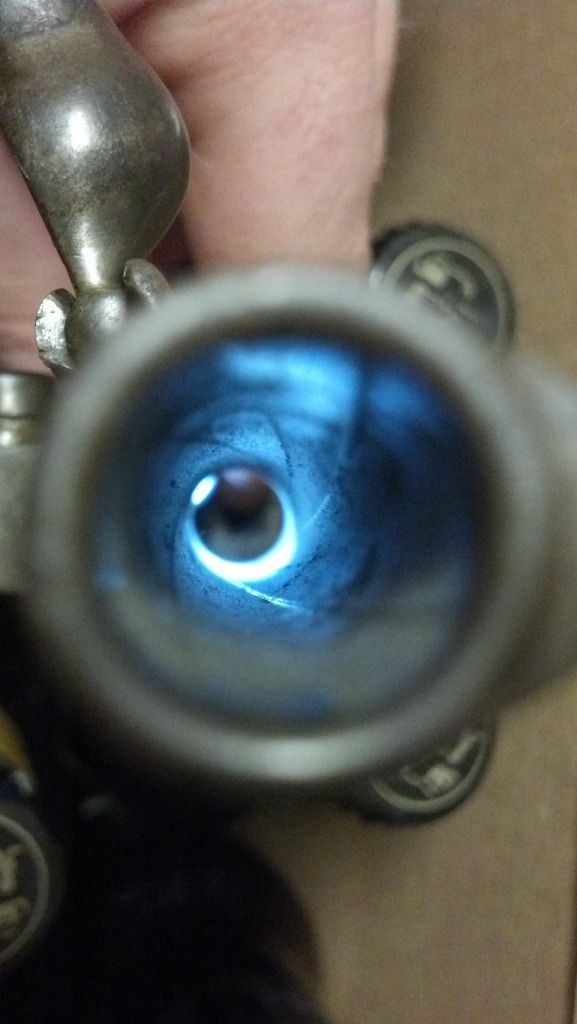Well, at least I didn't have to waste my time waiting on NICS for this...

It is only missing the left grip panel (which has no screw so I'm a bit confused as to how it was held in place to start with), but everything else looks present. This gun is so much better made than my Belgian S&W rip-off break-top. That thing has anvil-formed internal bits, this thing has a knurled spring tension lever--
inside the gun! I also see evidence of actual machining :P. The metal is all very good, too. The non-accessible surfaces inside the frame are still shiny despite the gun being "in the white" from the factory. Very pretty stamped text stating the "modele 1873" and the "Mle d'Armes St Etienne" make. Everything on this gun is threaded; even the dang pin holding the lanyard loop! All the various springs (except maybe hand/sear springs) seem at full power (I had a hell of a time getting the gun apart with bare hands--people must've been stronger back then)

I "field stripped" it and found the cylinder pin was slightly bent, but I think the bend may be outside the frame (i.e. doesn't affect (lack) of function). The cylinder stops are slightly worn with little noticeable ring. There is
zero detectable end-shake. Cylinder gap is ~.02". The hand is worn badly, the timing surfaces are worn to hell (but not peened much, suprisingly). In DA, the hand does not engage the cylinder much at all (worse DA trigger pull than my Belgian S&W No. 3 knock-off). In SA, the cylinder almost gets to where the bolt can engage the stop in the cylinder. When cocked, cylinder has a half-chamber of rotational play. The SA trigger is heavy, but suprisingly abrupt and clean in its release. I was suprised to see this gun has a half-cock notch (needed for turning the cylinder to load) which would make subsequent SA/DA shots a bit easier on the muscles.
I haven't detail stripped it yet (using the cylinder-pin/screwdriver), and probably won't unless repairs are possible, but I think the mechanism is similar to the Belgian No. 3 clone I have; the hand and bolt press against the cylinder to lock it up, and both get beat up under recoil.

Now, I hate "only dropped once" jokes about the French (especially for a gun of the WWI vintage

), but the bore of this thing is pretty dang good. The outside of the gun is far more "pitted" (may just be mould artifacts and dings) and beat up, and the dark bore appears both sharp and clean. Maybe the previous owner just dry-fired a lot to wear out the gun. The lack of rust of any sort under the grips and the barrel condition lead me to believe the exterior was never in such bad shape that the "pits" were caused by rust. Mere supposition, though.
If this thing is completely iredeemable from "wall hanger" status with little value, I'd be tempted to shine it up into a "steampunk" barbeque gun with some brass-inlayed grips and Victorian engraving. Hopefully, I can find a way to get this gun back into good enough shape to shoot marshmellows on top of a couple granules of black powder

. In that case I'd be more inclined to leave it alone, even if it has no value, and merely replace the missing grip.
Is removing patina on a gun issued "in white" considered a restoration, or bastardization?

^Thanks for the tip on brass; I wonder if 44-40 or 44 Russian would work as well (since that's what my S&W clone "shoots")
TCB